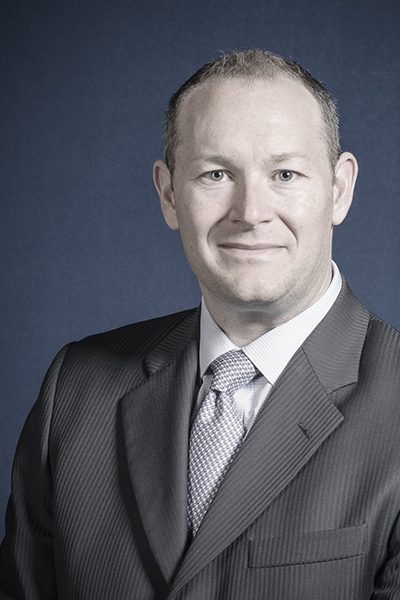 by Tom Kilian
by Tom Kilian
president of Hamilton County Community Foundation, an affiliate of CICF
Over the course of the last 20 years, I have seen many changes throughout the philanthropic landscape. The integration of technology and the increase in restricted giving to name a few. But what will define the next 20 years? How will we define our successes and ultimately evolve our sustainability to connect resources that help all citizens of our communities reach their full potential, regardless of their place, race or identity?
Perhaps we need to look outside of the box. Perhaps we need to consider a paradigm shift. For years, community foundations have focused on the acquisition of dollars to grant through the alignment of our strategic plans, and of course through the donor’s desire. I repeat, grant. What if we were to shift our traditional thinking from granting, to one of investing? In other words, where does the intersection of philanthropy and investment occur?
You may be aware that many in our field have started to explore the idea of impact investing and what it means for our donors and your clients. At our most recent professional advisors seminar on Sept. 26, CICF brought in three experts to speak on various aspects of impact investing. Carley Umstead, CPA, RSM US LLP, spoke on the tax issues involved with impact investing. Ruth Madrigal, JD, Steptoe & Johnson LLP, addressed the legal considerations and dove more deeply into the nuances of impact investing. And Jeff Croteau, CFA, Prime Buchholz, spoke about the investment aspects and practical applications of impact investing.
…where does the intersection of philanthropy and investment occur?
What is the role of our community foundations when it comes to social impact investing? First, I think it’s important to define what we mean by social impact investing. While this term can mean many things, we can all agree at the core— social impact investing is an investment made with the intention of receiving a measurable social and financial impact: think mission-minded investments.
Second, we must understand why it’s important for CICF and its affiliates to consider being involved. When I spoke, Rob MacPherson, vice president of development, here’s what he had to say:
“As a major philanthropic leader in our community, I think CICF should play a lead role in this space. Not only do we have charitable assets that could be deployed in social impact investing vehicles, we have relationships with hundreds of philanthropists, professional advisors and social entrepreneurs in our community. We have a history of being a convener around issues and for people in the charitable sector, so it is a natural role for us to play. I also think CICF is considered an entrepreneurial leader itself, so being at the forefront of a new movement and fairly new social change investment strategy is important. We need to be able to respond to the market place and if our fund advisors are looking for impactful ways to leverage their charitable assets, we should not only be familiar with social impact investment strategies, but should have experience and provide leadership in this area.”
Lastly, we would need to create a business model that allows for successful social impact and return to our donors. We are still exploring the role we’d like to play in impact investing, but here’s what we’re thinking.
We want to provide a unique opportunity for results-oriented social entrepreneurs to invest in businesses, funds and not-for-profits with the intention of generating positive, measurable social change alongside financial return. Through investment activities, donors can align their philanthropic dollars with the greatest societal needs in Central Indiana. Specifically, we are considering the framework below:
- Connect sophisticated not-for-profit donors to impactful community investments. Given CICF’s deep expertise and long-standing philanthropic presence, we are uniquely equipped to identify, vet and source mission-related investment opportunities and bring like-minded, sophisticated donors to the table to leverage collective impact and mitigate risk. Moreover, our rigorous due diligence process can ensure that the fund can build diversified, robust portfolios of sound investments that carry solid risk-return profiles.
- Provide early seed capital to launch promising new programs or services. Funds invested could be deployed as not-for-profit loans or as early-seed capital (in the form of private equity, debt, capital lines of credit or loan guarantees) to entities committed to advancing mission related causes. Through these social impact investments, we would be able to invest in, incubate and/or launch promising new programs or services that will address a broad range of social problems impacting our community.
- Promote market-based investment principles to social challenges. Our model could be grounded in the idea that market-based interventions would foster long term, sustainable community change. Identifying and investing in market-driven programs and projects that utilize accountable and scalable approaches to solving complex social challenges is how this typically is done. By deploying philanthropic investment through a market-based framework, this model maximizes the social investment return of donors.
While the above is what we’re learning and a potential framework, we are still researching and working to understand how we create the technical tactics to deliver on the above. Over the course of the next few months, we will be reaching out to many of you—as well as others in the field—to discuss this concept and how we can continue to partner with you and deliver the highest level of service to your clients and our community.
“Social impact investing will dramatically increase engagement in philanthropy.”
When asked about how this will influence our future, MacPherson said, “Social impact investing will dramatically increase engagement in philanthropy. As additional investment tools are created, we will see an increase in the number of engaged philanthropists, thus allocating more time, talent and treasure to social change and impact. As fundraisers and philanthropy professionals, we have many more solutions to offer philanthropists and investors. It broadens the conversation, it engages the donor more directly in results and it has the ability to more quickly and more creatively address issues in our community that will be beneficial for everyone.”
Want to talk to us more about impact investing? Contact us.
Tom Kilian
Hamilton County Community Foundation president
TomK@cicf.org
317.843.2479 x301
Rob MacPherson
vice president of development, CAP®
RobM@cicf.org
317.634.2423 x509






Leave A Comment